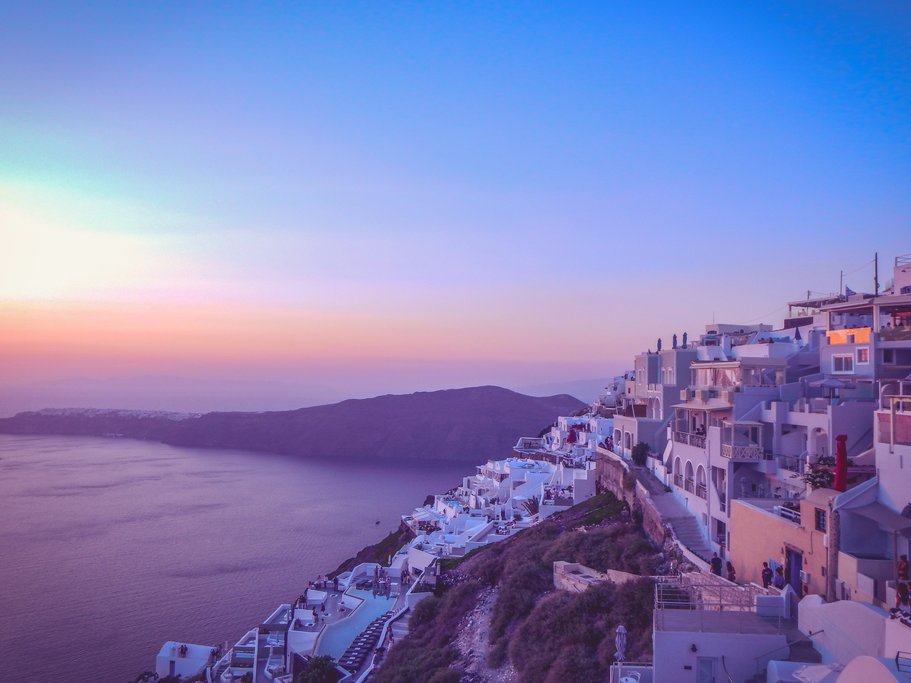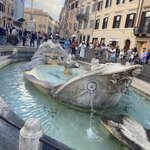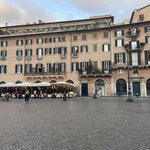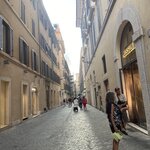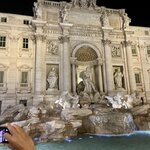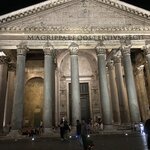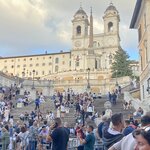Highlights
- Explore ancient architecture in Rome's Colosseum
- Sample Italian food & wine in Florence, the heart of Tuscany
- Enjoy a leisurely pace of life on the laid-back islands of Greece
- Take in spectacular sunsets from Santorini's cliffs
- Relax at famed Mykonos beach clubs
Brief Itinerary
| Day | Highlights | Overnight |
|---|---|---|
| Day 1 | Arrive in Rome & City Walking Tour | Rome |
| Day 2 | Colosseum & Ancient Rome Tour | Rome |
| Day 3 | Rome to Florence, Food & Wine Tour | Florence |
| Day 4 | Walking Tour of Florence's Highlights & Train to Venice | Venice |
| Day 5 | Venice Walking Tour & Fly to Athens | Athens |
| Day 6 | Guided Acropolis Visit & Flight to Mykonos | Mykonos |
| Day 7 | Mykonos Beach Day | Mykonos |
| Day 8 | Mykonos to Santorini | Santorini |
| Day 9 | Santorini Tour & Sunset in Oia | Santorini |
| Day 10 | Santorini to Athens - Depart Athens |
Detailed Itinerary
Day 1: Arrive in Rome & City Walking Tour

Welcome to Rome, known as the Eternal City! According to legend, Rome was founded by brothers Romulus and Remus in 753 BCE atop Palatine Hill. As the long-time center of the powerful Roman Empire, you'll find nearly 3,000 years of architecture, history, and culture throughout the city.
After arriving at one of Rome's airports, you'll transfer to your hotel in the historic center. Settle in and relax, then head out for a small group walking tour and your first look at the city.
The tour will take you to some of Rome's top historical and cultural sites, winding through narrow streets and wide piazzas as you explore the city. You'll learn about Rome's role as Italy's political capital, as well as the city's importance as the cradle of Catholicism.
Start at the Spanish Steps, then enter the tangle of narrow streets in Centro Storico, one of Rome's most historic districts, to see classical Roman and baroque architecture. Along the way, your guide will recount stories and historical anecdotes of the many little fountains, important buildings, and hidden piazzas that are tucked away in every corner of this magnificent city. As you weave in and out of the old city's labyrinth, you'll emerge in front of the Pantheon — ancient Rome's only intact Pagan temple.
Your next stop is the Trevi Fountain, where travelers throw coins into the water that according to legend ensure a return to Rome. Take a break at the neighborhood gelateria for the perfect cone of gelato, then conclude your tour at the Piazza Navona, one of Rome's most well-known squares. It sits on top of the former 1st-century Stadium of Domitian which once hosted chariot races and other competitive athletic events (the stadium could even be flooded to recreate naval battles!) The modern-day piazza follows the curve of the stadium's original outline, and traces of the original walls still stand on its outskirts. The 17th-century Chuch of Sant’agnese in Agone, designed by Borromini, marks the spot where the Christian martyr St. Agnes was murdered in 304 CE.
In the center of the square stands the Fountain of the Four Rivers (Fontana dei Quattro Fiumi), which was designed by Gian Lorenzo Bernini, a leading Italian sculptor. Find a quiet bench in the piazza and enjoy a relaxing evening of people watching and enjoying Rome's many talented sidewalk artists and musicians before making your way to a family-owned pizza shop for dinner.
Day 2: Colosseum & Ancient Rome Tour

Dive into the history of the Roman Empire with a walking tour of the Colosseum, the world's largest amphitheater. Learn about the lives of some of ancient Rome's most famous and illustrious citizens, such as Julius Caesar, Emperor Augustus, Nero, and the Flavian Emperors who built the Colosseum.
Continue to the Roman Forum, where you'll see excavations dating back 2,000 years, revealing the ruins of temples, squares, religious sites, and other buildings. These were the venues for public speeches, processions, elections, and, of course, gladiator matches. Historians and archaeologists refer to the Roman Forum as one of the most celebrated places in world history, and you'll see why as you explore the grounds.
Cut through the Roman Forum along Via Sacra, where you'll pass by the Temples of Vesta, Antonino, and Faustina. The Basilica Julia and Aemilia, a public meeting house that was commissioned by Julius Caesar, is also here.
Your tour of ancient Rome ends 131 feet (40 meters) above the city at Palatine Hill. From here you'll have incredible city views, with the Forum on one side, Circus Maximus on the other, and the Vatican in the distance. In between, the River Tiber snakes through Rome's historic neighborhoods.
In the evening, you'll have free time to continue exploring Rome. Grab dinner in one of the city's other neighborhoods, such as bohemian Monti, and enjoy the quiet hum of city life as the day comes to a close.
Day 3: Rome to Florence, Food & Wine Tour

In the morning, transfer by high-speed train to Florence, an artistic and romantic city in the heart of Italy's Tuscany region.
Florence is home to many masterpieces of Renaissance art and architecture, including the iconic Duomo with its terracotta-tiled dome, and the Galleria dell'Accademia, which displays Michelangelo's 'David' sculpture. Make the most of your morning with some of the following suggestions:
- Head to Studio Artemisia, located steps away from the Ponte Vecchio, for a class in ancient fresco painting techniques
- Visit the Chiesa e Museo di Orsanmichele, which served as the granary for the Sisters of San Michele in previous years
- Take a walk through the peaceful Boboli Gardens to see the oval-shaped Isolotto, a small island surrounded by various sculptures and lots of greenery.
If you prefer to explore a city's culture through its food, opt for a half-day food tour.
Head to Piazza Mattei where you'll meet your local culinary expert and start things off with a traditional Italian aperitif at a quintessential wine bar. Sample Tuscany's finest red wines and enjoy a plate of charcuterie while your tour guide delves into the history of Italian food and the significance of sharing a meal with family and friends.
From here, continue to the 16th century Jewish Quarter, formerly the Jewish Ghetto, known for its historic importance and tasty eats. Before sitting down to eat, take a quick walk around the area as you learn about the historical and cultural significance of this neighborhood, which was established by the Medici family as a real estate venture. After your tour, enjoy local appetizers like fried artichokes.
Close the food tour with a plate of Italy's famous pasta. Head to a local family-owned restaurant for an in-depth exploration of the different pasta shapes, cooking styles, and sauce pairings. Round out the meal the Italian way — with gelato and a strong coffee.
Day 4: Walking Tour of Florence's Highlights & Train to Venice
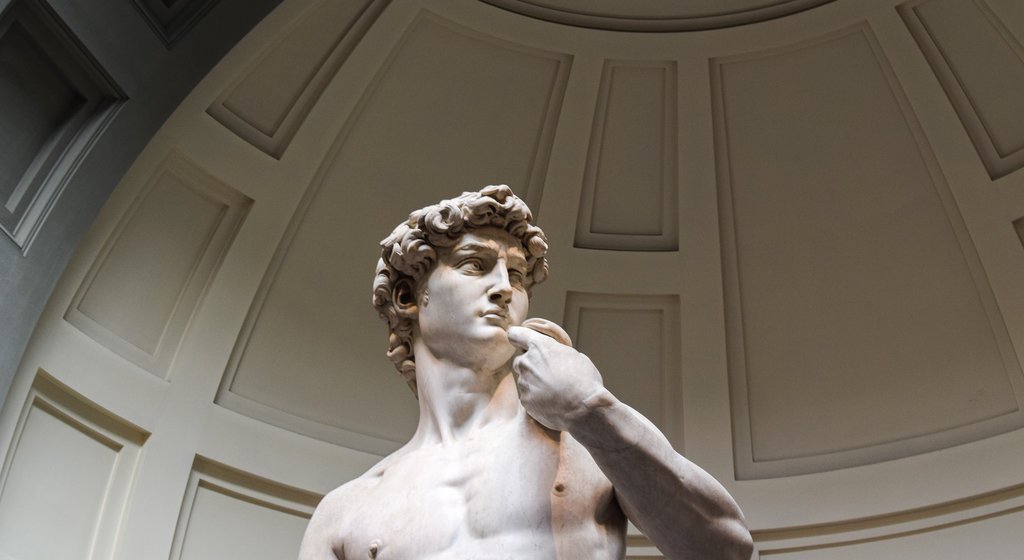
Spend the day touring the city's highlights with an art historian on a guided walking tour. Long considered a cultural capital and the "Jewel of the Renaissance", Florence is home to many masterpieces of art and architecture from that era which you'll have the opportunity to experience today.
Start in the medieval city center in the Piazza della Repubblica, one of the city's main squares. It has marked the city center since Roman times. See the Colonna della Dovizia, also known as the Column of Abundance, that marks the point where the cardus (north-south oriented road) and decumanus maximi (east-west oriented road) met and also where the Roman forum stood.
Continue to the Piazza della Signoria, the city's political center since the Middle Ages, where ceremonial events, rallies, and festivals are celebrated. Here you'll find several iconic Florentine landmarks—Palazzo Vecchio and the Uffizi Gallery, which houses works by Michelangelo and Leonardo da Vinci. The square's centerpiece is the Neptune Fountain, a popular meeting place. Your tour today includes skip-the-line tickets to the Uffizi Gallery, which houses works by Botticelli & Raffaello.
See the Ponte Vecchio bridge, a symbol of Florence's power for over seven centuries. The bridge houses buildings and shops which have been occupied by merchants and shopkeepers since the Middle Ages. Arrive at the Italian Gothic Cathedral of Florence and climb the 400+ steps to reach Giotto's bell tower. Enjoy a private and exclusive visit to the Cathedral Terraces, which perch high above the city traffic and are generally closed to the public. From here you'll have a birds-eye view of the whole city.
The final stop of the day is the Galleria dell'Accademia, where you'll enjoy priority skip-the-line access to view Michelangelo's "David" and other masterpieces of Renaissance sculpture.
In the evening, catch a train to Venice.
Chat with a local specialist who can help organize your trip.
Day 5: Venice Walking Tour & Fly to Athens

Experience Venice's highlights with a guided walking tour. Start at Piazza San Marco (St. Mark's Square), the heart of the city's cultural and administrative district. Tour Palazzo Ducale (Doge's Palace), a Venetian Gothic palace built as the primary residence for the Doge of Venice in 1340. The palace stands on Piazza San Marco, and its resplendent interior decor and priceless works of art make it a must-see for history and architecture buffs.
The palace is also connected to the next-door prison by the infamous Bridge of Sighs, which has joined the two buildings since the 16th century. The bridge features a small window onto Venice's harbor and earned its grisly name from the prisoners' sighing as they got one last glimpse of the city on their way to execution. While most visitors gather outside the bridge to look in, you'll get the best sense of history from inside the bridge, looking out from the same window as the doomed medieval prisoners.
Adjacent to the palace is the San Marco's Basilica, originally the Doge's personal chapel. The building is one of the best surviving examples of Italo-Byzantine architecture and features a stunning collection of Byzantine art, gold mosaics, and exquisite marble floors. Your tour includes a visit inside, where you'll be able to see for yourself the incredible art and architecture that the basilica holds.
After the morning's tour, grab lunch at one of the city's many cafes before spending the afternoon exploring one of the city's many historic and cultural sites:
- Tour the 18th-century Chiesa di Santa Maria Assunta (also known as I Gesuiti) in the Cannaregio district and the baroque 17th-century Basilica di Santa Maria della Salute, Venice's second-most renowned church.
- Ride the elevator to the top of the Campanile di San Marco for a bird’s-eye view of Venice.
- Dive into history at the Correr Civic Museum to see art and artifact displays from Venice's history as well as the former royals' quarters.
- Go shopping at the famous Rialto fish market, located at the heart of Venice. The smell of seafood and the sounds of vendors vying for shoppers' attention make this colorful and hectic market a must-see for any Venice traveler.
In the evening, catch a flight to Athens, home to the iconic Acropolis and so much more. The mythology of this spectacular city precedes it, with towering temples to Classical deities and the ruins of ancient marketplaces rubbing shoulders with lively nightlife, crowded flea markets, and contemporary cuisine.
Day 6: Guided Acropolis Visit & Flight to Mykonos

Today you'll get to experience the mighty Acropolis — ruins of the iconic 5th-century BCE complex located on the rocky hilltop overlooking the city. Take a private guided tour of the entire settlement with a professional guide who will share the stories of the country's most famous monument. In addition to the iconic Parthenon, dedicated to the city's patron goddess Athena, you'll view and learn about the Propylaea, the Temple of Athena Nike, and the most sacred temple of Erechtheion, all located on the sacred rock of the Acropolis.
Your tickets to the Acropolis will be pre-purchased ahead of time, leaving you with more time to explore the ruins. Your guide will also provide you with an iPad, which you can use to view the augmented reality displays of the building's original splendor in 3D.
To dive more into history, there is an option to explore the nearby Acropolis Museum. Many of the more delicate statues and other artifacts originally found at the Acropolis have been moved here, but you can imagine them in their previous home as you explore the exhibits.
After lunch, continue with the general tour to the historic neighborhood of Plaka to wander down its many cobbled streets and enjoy lunch at a local cafe.
In the evening, transfer to the airport to catch your flight to Mykonos.
Day 7: Mykonos Beach Day

Today is all about relaxing in the luxury that Mykonos has to offer, which is easy to find considering the island's unparalleled beauty, white-sand beaches, and turquoise waters.
Your driver will pick you up after a leisurely morning, so take your time enjoying breakfast and the pool. You'll be transferred to the beach of your choice, with options ranging from quiet and calm to humming with energy. Your options include:
- Agios Sostis, full of island residents and travelers who prefer tranquility to amenities, with just sand and a nearby taverna.
- Fokos, a quiet beach on the northeastern end of the island, with no distractions and a single taverna serving up local favorites and organic white wine produced on the island.
- Kalafatis, a quiet beach ideal for family relaxation.
- Ftelia on the northern side of the island, known for windsurfing and sailing when the winds are blowing and tavernas along the bay.
- Psarrou, a world-famous beach that attracts all the posh jet setters and features the Nammos cosmopolitan restaurant and club. Arrive early or make a reservation to secure a front-row umbrella and sunbed.
- Panormos, another famous club featured in Vanity Fair, and home to the popular Principote restaurant. It's elegant yet unpretentious, set in a perfect location protected from the wind.
- Elia; this club definitely gets points for its beauty and aesthetic. It also offers excellent sunbeds, umbrellas, services with drinks and foods, and decent prices. Elia has one of the longest seashores, with fine, white sand and amazing sea views.
- Kalo Livadi, a gorgeous little beach is set on the east side of Mykonos. It's much quieter than the party beaches, but keep in mind that the sand is very pebbly. It's a great choice if you hope to swim, as the water is almost always warm and calm.
- Platis Gialos, an area classic offering a great environment, good food, clean water, and some of the best music in the area.
In the late afternoon, head back to your hotel to enjoy more relaxation by the pool or in your room. Then it's time to hit the town! You can't miss the incredible nightlife in Mykonos, as it's some of the best in the world.
Day 8: Mykonos to Santorini

After breakfast at your hotel, you'll get an early ferry to Santorini. Nothing says "good morning" like watching the sun coming up over the island's iconic cubic architecture. Upon arrival, you'll take in the island's central caldera—the site of one of the largest volcanic eruptions in history—rising above you.
The island's volcanic history has led to the formation of some of the more unique beaches in the Greek islands, along with the dramatic cliff views on the island's caldera side. Spend your day relaxing at the beach or catching some exercise—and even more views—from one of Santorini’s more than 12 scenic walking routes, ranging from between two to eight miles each.
As the day comes to a close, make your way to Akrotiri Lighthouse for unparalleled views of the sunset over the water. Enjoy a chilled bottle of wine as you reflect on your day, soaking in the tranquil evening.
For dinner, sample the island's signature cherry tomatoes and white eggplants as guest stars in seafood dishes or the main event.
Day 9: Santorini Tour & Sunset in Oia

In the morning, you’ll be picked up from your hotel or from a central point of Fira for a half-day guided tour. After a short excursion of the area, you'll head to the village of Oia, the furthest town along the rim of the caldera. Oia's arty streets, white-washed facades, and pastel-hued homes are the quintessential Santorini scene.
From here, you'll take a trip up to Prophet Elias Monastery, which stands the highest peak on the island. Bring your camera for the 360-degree views at the top, as well as the many stops on your way down. You'll also see medieval villages at Megalochori and Pyrgos and the Blue Dome in Firostefani before returning to town.
After the tour, return to Oia to wander the alleys and linger in the town's tavernas into the afternoon. When searching for your meal, seek out tomato keftedes, deep-fried tomato balls that encapsulate the essence of the Mediterranean diet, and a Santorini specialty — spelt pie.
Oia is also the perfect place to catch sunset views. Stake out your viewing platform over the panorama, then stick around to enjoy the town's tavernas into the evening.
Day 10: Santorini to Athens - Depart Athens

It's time to say farewell to Greece! Savor one more breakfast in Santorini before you transfer to the airport or ferry and begin your journey home.
